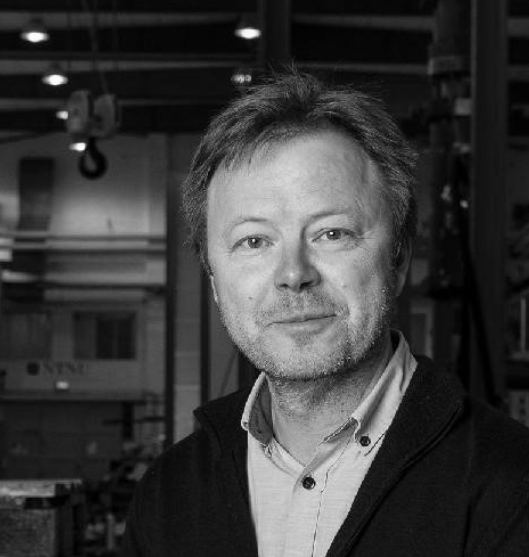
Tore Børvik
NTNU and Norwegian Defence Estates Agency, Norway
Sustainable shielding: Ballistic performance of low-carbon concrete
Abstract:
Concrete is by far the most consumed construction material globally. The widespread use of concrete is mainly due to its availability, durability, high compressive strength and cost efficiency. This makes the material suitable for usage in most structures, from critical infrastructure to military fortifications. The growing global demand for greener and more sustainable materials in defence applications begs the question of whether low-carbon concrete can withstand extreme loadings like blast and ballistic impact as well as standard concrete. Few, if any, studies in the open literature compare the resistance of low-carbon concrete and standard high-strength concrete against such loads. In this project, we evaluate the ballistic perforation resistance of two low-carbon C75 concretes with 22% and 58% reduction in CO2 emissions compared to standard C75 concrete. All concretes are commercially available and were produced by the same manufacturer. Standardized material tests were used to track the basic strength parameters. We fired ogival steel projectiles at plain and steel-reinforced low-carbon concrete slabs with a thickness of 100 mm in a compressed gas gun facility. The results revealed no significant difference in ballistic performance between the low-carbon C75 concretes and the C75 concrete with no CO2 mitigation, which is believed to be an excellent result both from an environmental and protective point of view.
Biography:
Dr Børvik is currently a professor (100% position) at the Department of Structural Engineering, NTNU, and a senior advisor (20% position) for the Norwegian Defence Estates Agency. He has an expertise and research interest in modelling, simulation and testing materials and structures exposed to extreme loadings, such as ballistic impact, blast loading, dropped objects and crashworthiness. He was the programme head of the research programme Optimal Energy Absorption and Protection in SFI SIMLab at NTNU from 2007-2014, and he is the vice director and a programme head of the research programme Protective Structures in SFI CASA at NTNU from 2015-2023. Currently, he is the group leader of SIMLab, NTNU. From 2016 to 2021 he was a core FRIPRO Toppforsk-project FractAl team member. He has authored >200 articles in peer-reviewed Q1 journals and a corresponding number of papers at international conferences. Currently, he serves as an Associate Editor in the International Journal of Impact Engineering and on the Editorial Board of Strain. From 1993 to 2011, he held a position as a senior researcher (100% position) at the R&D Department, Norwegian Defence Estates Agency, mainly working with extreme mechanics, simultaneously as he was an adjunct professor (20% position) at SIMLab from 2002 to 2012. He is involved in many research projects funded by the Ministry of Defence, the Research Council of Norway, and national and international industrial partners.